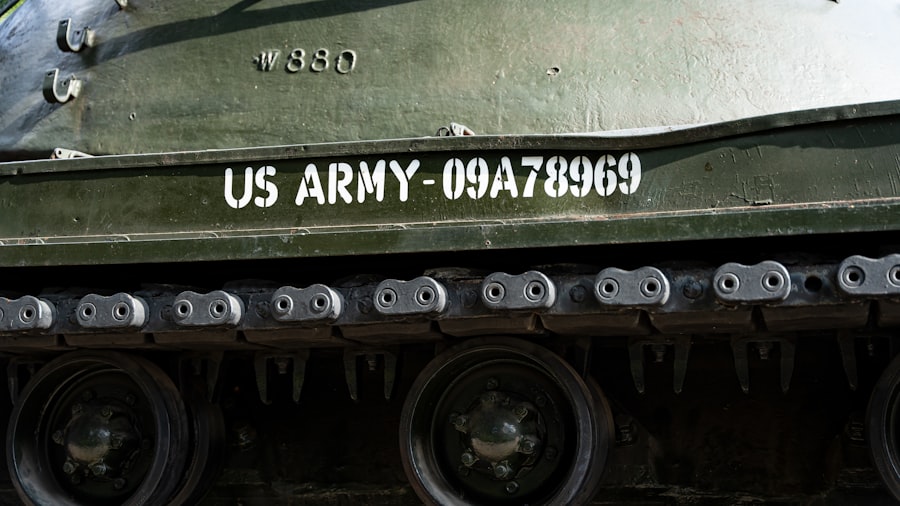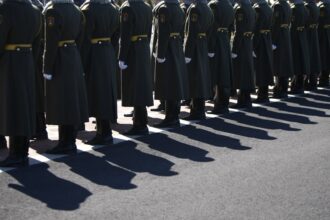The Russian Army, one of the largest military forces in the world, faces a myriad of challenges in its supply chain operations. These challenges are not merely logistical; they encompass a range of issues from outdated infrastructure to bureaucratic inefficiencies. The complexity of military logistics is compounded by the vast geographical expanse of Russia, which stretches across eleven time zones and includes diverse terrains.
The supply chain is the backbone of any military operation, ensuring that troops are equipped with the necessary resources to perform their duties effectively. In the case of the Russian Army, historical legacies, economic constraints, and geopolitical tensions have all contributed to a supply chain that often struggles to meet the demands of modern warfare.
This article delves into the historical context, current challenges, and potential strategies for improvement within the Russian Army’s supply chain.
Key Takeaways
- The Russian Army faces significant supply chain challenges, stemming from historical, operational, and technological factors.
- These challenges have a direct impact on the effectiveness and efficiency of Russian Army operations, affecting readiness and response capabilities.
- Strategies for addressing these challenges include modernization and technology integration, collaboration with international suppliers, and implementation of lean and agile supply chain practices.
- Training and development of supply chain personnel are crucial for improving the overall performance and resilience of the Russian Army supply chain.
- Case studies of successful supply chain improvements in the Russian Army provide valuable insights for future improvements and a more optimistic outlook for the supply chain’s future.
Historical Overview of Russian Army Supply Chain
Historically, the Russian Army’s supply chain has been shaped by a series of significant events and transformations. During the Soviet era, the military logistics system was characterized by centralized planning and state control. The government prioritized heavy industry and military production, leading to a robust supply chain that could support large-scale operations.
However, this system was often inflexible and slow to adapt to changing circumstances, which became evident during conflicts such as the Afghan War in the 1980s. The dissolution of the Soviet Union in 1991 marked a turning point for the Russian military supply chain. The transition from a command economy to a market-oriented system introduced new challenges, including a lack of funding and resources.
The subsequent years saw a decline in military readiness and logistical capabilities, as the focus shifted away from maintaining a strong supply chain. This historical backdrop is crucial for understanding the current state of the Russian Army’s logistics and supply chain management.
Current Challenges Faced by Russian Army Supply Chain

In contemporary times, the Russian Army grapples with several pressing challenges that hinder its supply chain effectiveness. One significant issue is the aging infrastructure that supports military logistics. Many transportation networks, warehouses, and distribution centers are outdated and in dire need of modernization.
This deterioration not only slows down the movement of supplies but also increases operational costs, making it difficult for the army to respond swiftly to emerging threats. Additionally, bureaucratic inefficiencies plague the supply chain processes within the Russian military. The complex hierarchy and rigid protocols often lead to delays in decision-making and resource allocation.
This sluggishness can be detrimental during critical operations where timely access to supplies is essential. Furthermore, corruption and mismanagement within various levels of the supply chain exacerbate these issues, leading to wastage of resources and diminished trust among personnel.
Impact of Supply Chain Challenges on Russian Army Operations
| Challenges | Impact on Russian Army Operations |
|---|---|
| Logistics disruptions | Delayed deployment of troops and equipment |
| Shortage of spare parts | Decreased operational readiness of vehicles and equipment |
| Supply chain bottlenecks | Difficulty in maintaining adequate supply levels for troops |
| Increased costs of transportation | Higher expenses for moving supplies and equipment |
The challenges faced by the Russian Army’s supply chain have far-reaching implications for its operational effectiveness. A poorly functioning supply chain can result in inadequate provisioning of troops, which directly impacts their combat readiness. For instance, during military exercises or real-world conflicts, delays in receiving essential equipment or supplies can hinder mission success and compromise troop safety.
Moreover, these supply chain inefficiencies can affect morale among soldiers. When troops are not adequately supplied with food, ammunition, or medical resources, it can lead to frustration and a sense of neglect. This situation can diminish their confidence in leadership and overall operational capabilities.
As such, addressing supply chain challenges is not merely a logistical concern; it is also a matter of maintaining troop morale and ensuring effective military performance.
Strategies for Addressing Russian Army Supply Chain Challenges
To tackle the myriad challenges facing its supply chain, the Russian Army must adopt a multifaceted approach that encompasses both short-term fixes and long-term strategies. One potential strategy involves investing in infrastructure modernization. Upgrading transportation networks and logistics facilities can significantly enhance the efficiency of supply movements and reduce lead times for critical supplies.
Another essential strategy is streamlining bureaucratic processes within the supply chain. By simplifying decision-making protocols and reducing unnecessary layers of approval, the army can improve responsiveness and agility in logistics operations. Implementing training programs focused on best practices in supply chain management can also empower personnel to make informed decisions that enhance overall efficiency.
Modernization and Technology Integration in Russian Army Supply Chain

Modernization plays a crucial role in revitalizing the Russian Army’s supply chain capabilities. Embracing technology can lead to significant improvements in logistics operations. For instance, integrating advanced tracking systems can provide real-time visibility into inventory levels and supply movements.
This transparency allows for better planning and resource allocation, ultimately enhancing operational readiness. Moreover, adopting automation technologies can streamline various aspects of the supply chain process. Automated inventory management systems can reduce human error and improve accuracy in stock levels, while robotics can assist in warehousing operations.
Collaboration and Partnerships with International Suppliers
In an increasingly interconnected world, collaboration with international suppliers can offer valuable opportunities for enhancing the Russian Army’s supply chain capabilities. Establishing partnerships with foreign defense contractors can provide access to advanced technologies and best practices that may not be readily available domestically. Such collaborations can facilitate knowledge transfer and innovation within Russia’s military logistics framework.
Furthermore, engaging with international suppliers can help diversify sources of critical materials and equipment. This diversification reduces dependency on domestic production capabilities that may be limited or outdated. By fostering relationships with global partners, the Russian Army can enhance its resilience against potential disruptions in its supply chain.
Training and Development of Supply Chain Personnel
The effectiveness of any supply chain ultimately hinges on the skills and knowledge of its personnel. Therefore, investing in training and development programs for supply chain staff is essential for improving operational efficiency within the Russian Army. Comprehensive training initiatives can equip personnel with modern logistics practices, inventory management techniques, and data analysis skills necessary for effective decision-making.
Additionally, fostering a culture of continuous learning within the organization can encourage personnel to stay abreast of industry trends and innovations. By prioritizing professional development, the Russian Army can cultivate a workforce that is adept at navigating complex supply chain challenges and implementing effective solutions.
Implementation of Lean and Agile Supply Chain Practices
Adopting lean and agile practices within the Russian Army’s supply chain can lead to significant improvements in efficiency and responsiveness. Lean principles focus on eliminating waste and optimizing processes to deliver value more effectively. By identifying bottlenecks and streamlining workflows, the army can enhance its ability to deliver supplies where they are needed most.
Agility is equally important in a military context, where rapid changes in operational requirements are common. Implementing agile methodologies allows for quicker adjustments to logistics plans based on real-time information and evolving circumstances. By fostering a culture that embraces flexibility and adaptability, the Russian Army can better respond to dynamic operational environments.
Case Studies of Successful Supply Chain Improvements in Russian Army
Examining case studies of successful supply chain improvements within the Russian Army provides valuable insights into effective strategies that have been implemented in recent years. One notable example is the modernization efforts undertaken during large-scale military exercises, where logistical planning was prioritized alongside tactical maneuvers. These exercises highlighted the importance of synchronized supply movements and demonstrated how improved coordination led to enhanced operational outcomes.
Another case study involves partnerships with private sector companies specializing in logistics solutions. By collaborating with these firms, the Russian Army has been able to leverage innovative technologies such as predictive analytics for inventory management. These initiatives have resulted in reduced lead times for critical supplies and improved overall efficiency within the supply chain.
Future Outlook for Russian Army Supply Chain and Conclusion
Looking ahead, the future outlook for the Russian Army’s supply chain hinges on its ability to adapt to evolving challenges while embracing modernization efforts. As geopolitical tensions continue to shape military strategies worldwide, having a robust and efficient supply chain will be crucial for maintaining operational readiness. In conclusion, addressing the challenges faced by the Russian Army’s supply chain requires a comprehensive approach that encompasses modernization, training, collaboration, and process optimization.
By implementing effective strategies and leveraging technology, the army can enhance its logistical capabilities and ensure that it remains prepared for future conflicts. The journey toward an efficient supply chain is ongoing; however, with commitment and innovation, there lies potential for significant improvements that will ultimately bolster Russia’s military effectiveness on the global stage.
In the ongoing analysis of the Russian army’s supply chain issues, it is crucial to consider the broader context of military logistics and strategic planning. An insightful article that complements this analysis can be found on the website “In The War Room.” This article delves into the complexities of military supply chains and the impact of logistical challenges on operational effectiveness. For a deeper understanding, you can read the related article by visiting In The War Room. This resource provides valuable perspectives on how supply chain inefficiencies can affect military operations, offering a comprehensive view that enhances the discussion on Russian military logistics.
WATCH NOW! 🎖️ Plot Twist: Russia’s Military Is Being Eaten Alive By Its Own Corruption
FAQs
What are the main supply chain issues in the Russian army?
The main supply chain issues in the Russian army include outdated infrastructure, lack of modern technology, inefficient logistics, and bureaucratic hurdles.
How do these supply chain issues affect the Russian army’s operations?
These supply chain issues can lead to delays in the delivery of essential supplies, increased costs, and reduced operational effectiveness for the Russian army.
What are the potential consequences of these supply chain issues for the Russian army?
The potential consequences of these supply chain issues for the Russian army include decreased readiness, lower morale among troops, and a diminished ability to respond to crises or conflicts.
What steps can the Russian army take to address these supply chain issues?
The Russian army can address these supply chain issues by investing in modernizing infrastructure and technology, streamlining logistics processes, and reducing bureaucratic red tape.
How do these supply chain issues compare to those of other military forces?
While supply chain issues are common in military forces around the world, the specific challenges faced by the Russian army may differ due to factors such as historical infrastructure, geopolitical considerations, and resource allocation.




